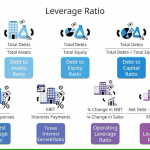In this new landscape, investors are looking for innovative ways to diversify their portfolios and maximize returns. One such avenue that has gained significant attention is the integration of Special Purpose Acquisition Companies (SPACs) into investment portfolios.
SPACs, also known as “blank check” companies, have rapidly emerged as a popular investment vehicle, allowing investors to participate in the growth potential of private companies going public. With this approach, investors have the opportunity to invest in early-stage businesses with dynamic growth potential.
By integrating SPACs into investment portfolios, wealth managers can tap into a unique blend of risk and reward. However, it’s essential to understand the intricacies of this investment strategy and its potential impact on your overall portfolio.
In this article, we will explore how wealth managers are leveraging SPACs to optimize investment portfolios in the era of Wealth Management 2.0. We will delve into the benefits, risks, and considerations involved in this approach, providing you with valuable insights to make informed investment decisions.
Join us on this journey as we explore the integration of SPACs into investment portfolios and unlock exciting new opportunities for wealth generation in the digital age.
Understanding wealth management and investment portfolios
Before we delve into the integration of SPACs into investment portfolios, it’s crucial to understand the fundamentals of wealth management and how investment portfolios are structured.
Wealth management is a comprehensive approach to managing an individual’s financial assets and investments to achieve their long-term financial goals. It involves analyzing the individual’s risk tolerance, time horizon, and investment objectives to develop a customized investment strategy.
It goes beyond traditional investment advice and focuses on all aspects of your financial life, including tax planning, estate planning, and risk management. With the guidance of a wealth manager, you can create a personalized strategy that aligns with your unique financial objectives.
Investment portfolios are a collection of various asset classes, such as stocks, bonds, real estate, and alternative investments, held by an individual or an entity. The goal of a well-diversified investment portfolio is to minimize risk and maximize returns. Wealth managers carefully construct investment portfolios based on the investor’s risk appetite, investment horizon, and financial goals.
The role of a wealth manager
A wealth manager plays a crucial role in helping individuals and families achieve their financial goals. They serve as a trusted advisor, working closely with clients to understand their unique financial circumstances and develop a comprehensive wealth management plan.
One of the primary responsibilities of a wealth manager is to assess your current financial situation and identify areas for improvement. This includes analyzing your income, expenses, assets, liabilities, and investment portfolio. By gaining a deep understanding of your financial landscape, a wealth manager can make recommendations that will optimize your financial position.

In addition to analyzing your current situation, a wealth manager will also work with you to define your long-term financial goals. Whether you’re saving for retirement, planning for your children’s education, or looking to grow your wealth, a wealth manager can help you develop a roadmap to achieve these objectives.
Once your goals are established, a wealth manager will create a personalized wealth management plan that takes into account your risk tolerance, time horizon, and investment preferences. This plan will serve as a guide to help you navigate the complexities of the financial markets and make informed investment decisions.
By regularly monitoring your portfolio and adjusting your strategy as needed, a wealth manager can help you stay on track and make the most of your investments. They will keep you informed about market trends and potential opportunities, ensuring that your portfolio remains aligned with your long-term objectives.
In summary, a wealth manager is a financial professional who takes a holistic approach to managing your wealth. They provide personalized advice and guidance to help you make informed decisions, optimize your financial position, and achieve your long-term financial goals.
Benefits of wealth management
Wealth management offers numerous benefits that can help individuals and families achieve financial success. Let’s explore some of the key advantages of working with a wealth manager.
- Holistic approach: Unlike traditional financial advisors who focus solely on investment management, wealth managers take a comprehensive approach to managing your wealth. They consider all aspects of your financial life, including tax planning, estate planning, risk management, and more. This holistic approach ensures that your financial strategy is well-rounded and aligned with your overall objectives.
- Personalized advice: A wealth manager understands that every individual’s financial situation is unique. They take the time to get to know you, understand your goals, and develop a personalized wealth management plan that suits your needs. This tailored advice allows you to make informed decisions that are in line with your financial goals and risk tolerance.
- Expertise and experience: Wealth managers are highly skilled professionals with extensive knowledge of the financial markets. They stay up to date with the latest trends and developments, allowing them to provide you with expert advice and guidance. Their experience in managing wealth for clients gives them valuable insights that can help you navigate the complexities of the financial landscape.
- Time-saving: Managing your own wealth can be time-consuming and overwhelming, especially if you have a busy schedule. By outsourcing this responsibility to a wealth manager, you free up your time to focus on other important aspects of your life. They handle the day-to-day management of your investments, monitor your portfolio, and ensure that your financial strategy remains on track.
- Risk management: One of the key benefits of wealth management is the emphasis on risk management. A wealth manager will work with you to identify your risk tolerance and develop strategies to mitigate potential risks. They will diversify your portfolio, allocate assets effectively, and make adjustments as needed to protect your wealth from market volatility.
Wealth management offers a range of benefits that can help you achieve your financial goals. From a holistic approach to personalized advice and risk management, working with a wealth manager can provide you with peace of mind and the confidence to make informed financial decisions.
Wealth management vs. financial planning
While wealth management and financial planning are closely related, they are not the same thing. It’s important to understand the differences between the two to determine which approach is right for you.
Financial planning is the process of setting and achieving your short-term and long-term financial goals. It involves creating a roadmap that outlines the steps you need to take to achieve those goals. This can include saving for retirement, paying off debt, buying a home, or planning for your children’s education.
Wealth management, on the other hand, is a broader and more comprehensive approach to managing your finances. While financial planning focuses primarily on goal setting and budgeting, wealth management encompasses a wider range of financial services, including investment management, tax planning, estate planning, and risk management.
A wealth manager takes a holistic view of your financial situation and develops a personalized strategy that aligns with your unique goals and circumstances. They consider all aspects of your financial life and provide advice and guidance to help you optimize your wealth and achieve long-term financial success.
In essence, financial planning is a subset of wealth management. It focuses on goal setting and budgeting, while wealth management encompasses a broader range of financial services. Depending on your needs and objectives, you may choose to work with a financial planner or a wealth manager, or a combination of both.
Key components of a wealth management plan
A wealth management plan is a comprehensive strategy that encompasses all aspects of your financial life. It serves as a roadmap to help you achieve your financial goals and ensure long-term financial success. Let’s explore some of the key components of a wealth management plan.
- Financial goals: The first step in creating a wealth management plan is to define your financial goals. This includes both short-term and long-term objectives. Do you want to retire early? Buy a vacation home? Fund your children’s education? By clearly defining your goals, you can develop a plan that is tailored to your specific needs.
- Asset allocation: Asset allocation is the process of dividing your investment portfolio among different asset classes, such as stocks, bonds, and real estate. It is an important component of a wealth management plan as it helps you balance risk and return. A wealth manager will work with you to determine the optimal asset allocation based on your risk tolerance, time horizon, and investment preferences.
- Investment management: Investment management is a key component of wealth management. It involves selecting and managing investments that align with your financial goals and risk tolerance. A wealth manager will help you build a diversified portfolio, monitor your investments, and make adjustments as needed to optimize your returns.
- Tax planning: Tax planning is an essential part of a wealth management plan. By effectively managing your taxes, you can minimize your tax liability and maximize your after-tax returns. A wealth manager will work with you to identify tax-efficient investment strategies, make use of tax-saving vehicles, and keep you informed about any changes in tax laws that may affect your financial situation.
- Estate planning: Estate planning involves determining how your assets will be distributed after your death. It includes creating a will, establishing trusts, and designating beneficiaries. A wealth manager can guide you through the estate planning process, ensuring that your assets are protected and transferred according to your wishes.
- Risk management: Risk management is an integral part of wealth management. It involves identifying potential risks and developing strategies to mitigate them. This includes diversifying your portfolio, purchasing insurance policies, and implementing risk management techniques. A wealth manager will help you assess your risk tolerance and develop a plan to protect your wealth from unforeseen events.
By incorporating these key components into your wealth management plan, you can ensure that all aspects of your financial life are addressed. A comprehensive plan will help you make informed decisions, optimize your wealth, and achieve your long-term financial goals.
The rise of SPACs in the investment landscape
Over the past few years, SPACs have gained immense popularity in the investment landscape. SPACs are shell companies created for the sole purpose of merging with or acquiring a private company, taking it public without going through the traditional initial public offering (IPO) process. This alternative method offers several advantages for both the private company and the investors.
The rise of SPACs can be attributed to various factors. Firstly, it provides private companies an alternative route to access public capital markets, bypassing the lengthy and rigorous IPO process. Secondly, it offers investors the opportunity to invest in early-stage companies with high growth potential. Lastly, SPACs provide a faster and more efficient way for investors to liquidate their investments compared to traditional IPOs.
Benefits of integrating SPACs into investment portfolios
Integrating SPACs into investment portfolios can offer several benefits for wealth managers and investors alike. Firstly, SPACs provide access to a diverse range of investment opportunities, allowing investors to participate in the growth potential of innovative and high-growth private companies. This exposure to early-stage businesses can contribute to portfolio diversification and potentially higher returns.
Furthermore, SPACs offer liquidity advantages compared to traditional private equity investments. Investors have the flexibility to buy and sell SPAC shares on the open market, providing an additional layer of liquidity to their investment portfolios. This liquidity can be especially valuable in times of market volatility or when capital needs arise.
Additionally, SPACs provide a unique investment structure that allows investors to align their investments with specific industries or sectors of interest. This targeted approach can enhance the overall portfolio strategy and potentially capitalize on emerging trends or market opportunities.
Risks and considerations when investing in SPACs
While integrating SPACs into investment portfolios can offer attractive benefits, it’s essential to understand the risks and considerations associated with this investment strategy. Firstly, SPAC investments are inherently speculative, as they involve investing in early-stage companies with limited operating histories. These companies may face significant challenges and uncertainties, which can result in substantial losses for investors.
Another key consideration is the potential dilution of ownership. When a SPAC merges with a private company, existing shareholders may experience dilution as new investors enter the picture. This dilution can impact the overall value of the investment and the potential returns.
Furthermore, the success of a SPAC investment largely depends on the ability of the management team to identify and execute a successful merger or acquisition. Investors should carefully evaluate the management team’s track record and expertise in the target industry before committing their capital.
Strategies for incorporating SPACs into your investment portfolio
To effectively incorporate SPACs into an investment portfolio, wealth managers need to develop a clear strategy tailored to the investor’s risk profile and investment objectives. One strategy is to allocate a portion of the portfolio to SPACs, allowing for exposure to potential high-growth opportunities while maintaining diversification across other asset classes.
Another approach is to actively manage the SPAC holdings, taking advantage of market inefficiencies and timing the investments based on market conditions. This active management strategy requires thorough analysis and research to identify promising SPAC opportunities and to optimize the portfolio’s risk-reward profile.
Additionally, wealth managers can consider diversifying across different sectors or industries within the SPAC universe. This approach spreads the risk and reduces the reliance on a single SPAC or industry, mitigating the impact of potential setbacks.
How to identify promising SPAC opportunities
Identifying promising SPAC opportunities requires a systematic approach and comprehensive due diligence. Firstly, investors should evaluate the SPAC’s management team and their track record in successfully executing mergers or acquisitions. A strong management team with relevant industry experience increases the likelihood of a successful outcome.

Additionally, investors should analyze the target company or companies that the SPAC intends to merge with. Assessing the target’s growth potential, competitive advantage, and overall market outlook is crucial in determining the investment’s viability.
Furthermore, investors should closely examine the terms of the SPAC merger, including the valuation, ownership structure, and potential post-merger performance. Thorough analysis of these factors can provide valuable insights into the investment’s potential risks and rewards.
Due diligence and research for SPAC investments
Before committing capital to a SPAC investment, thorough due diligence and research are imperative. Investors should analyze the SPAC’s prospectus, financial statements, and any relevant disclosures to gain a comprehensive understanding of the investment’s structure, terms, and risks.
Furthermore, investors should leverage various sources of information, including company filings, industry reports, news articles, and expert opinions, to gather insights and assess the investment’s potential. Engaging with industry experts and attending SPAC-related events can also provide valuable networking opportunities and access to expert knowledge.
Additionally, investors should stay informed about regulatory developments and changes in the SPAC landscape. Regulations surrounding SPACs are evolving rapidly, and staying up-to-date with the latest rules and guidelines is crucial in making informed investment decisions.
Conclusion: The future of SPACs in wealth management
As we conclude our exploration of integrating SPACs into investment portfolios, it’s evident that SPACs have become a prominent feature of the modern wealth management landscape. With their unique blend of risk and reward, SPACs offer investors the opportunity to participate in the growth potential of early-stage businesses.
However, it’s crucial for wealth managers and investors to approach SPAC investments with caution and conduct thorough due diligence. Understanding the risks, considering the potential rewards, and developing a well-defined investment strategy are key to successfully integrating SPACs into investment portfolios.
In the era of Wealth Management 2.0, where innovation and diversification are paramount, SPACs present an exciting avenue for wealth generation. By leveraging the benefits of SPACs and carefully navigating the risks, wealth managers can optimize investment portfolios and unlock new opportunities for their clients in the digital age. So, embrace the future of wealth management and explore the potential of integrating SPACs into your investment portfolio.






